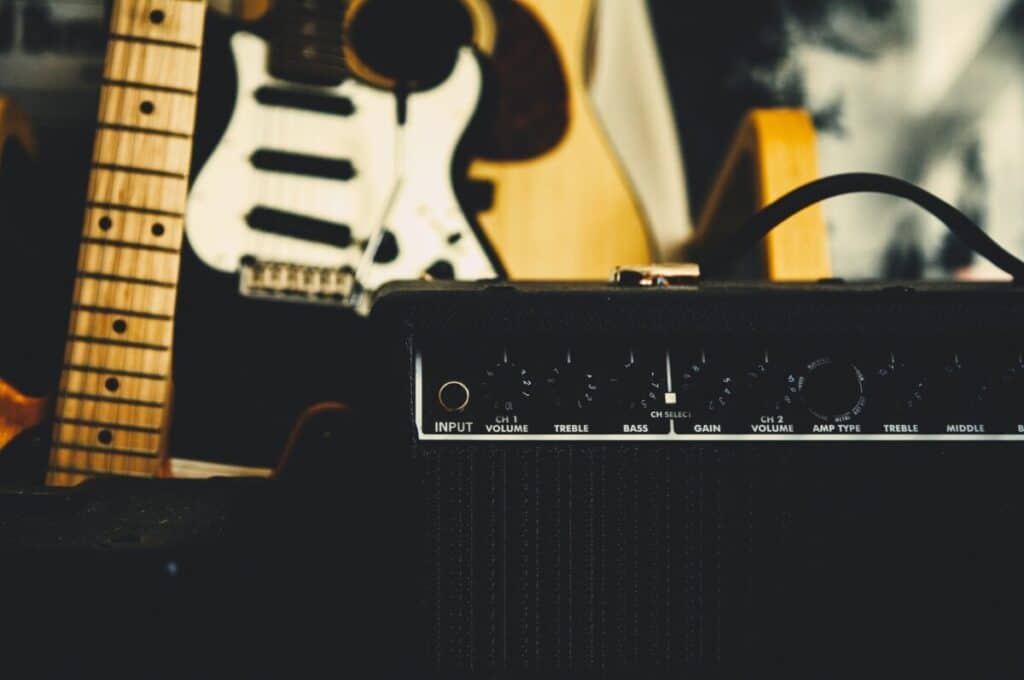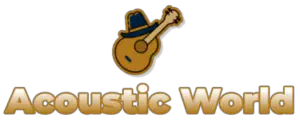
If you’re just starting out on the guitar, and only have either an electric or acoustic guitar, it can be frustrating to feel like you’re stuck playing only one kind of music. The good news is that you can actually play acoustic guitar songs on the electric guitar, and vice versa: You can also play electric guitar songs on the acoustic.
In this article, we’ll be exploring the best strategies to transfer one kind of guitar playing onto the other: playing electric music on an acoustic guitar, or playing acoustic music on an electric guitar. Let’s first look at how you can play acoustic guitar songs on an electric instrument.
How to Play Acoustic Guitar Songs on Electric Guitar
Learning to play acoustic songs on electric guitar can be challenging. If you want to imitate the clean sound of the acoustic, a good place to start is by turning off all distortion on your amplifier. A little crunch could be fine on some tunes, but you’re often better starting off with a really clean sound, and slowly adding some crunch and distortion later on
I’d also recommend using the neck pick up of your electric guitar, to achieve a warm and rich sound. A little reverb is also a nice touch and certainly doesn’t hurt either. Here’s a video that shows how close you can get to an acoustic tone on your electric guitar if you take this approach:
Here’s one last thing to think about in my opinion: the way you strum and pick. This will depend on the song, but some sound better if you use the skin of your thumb rather than your fingernails or a pick. This is especially true for acoustic songs that were fingerpicked in my opinion.
How to Play Electric Guitar Songs on Acoustic Guitar
But what if you want to play electric guitar songs on your acoustic guitar? Well, this is still possible too. In fact, many rhythm guitar parts will transfer over to the acoustic pretty well without even changing them at all. Here’s a guitarist playing several popular electric songs and simply moving them onto the acoustic:
If you want to get fancy, there are even some things you can do to take advantage of the new acoustic environment. For example, you could move the chords of the song into open chords rather than barre chords or power chords. Open chords sound amazing on an acoustic, and you’ll get much richer fuller sounds from open chords than you will when trying to play barre chords or power chords on your acoustic guitar.
Playing Electric Guitar Songs on an Acoustic | Examples
If you’re looking for inspiration for translating your favorite electric songs onto the acoustic, I have two amazing albums to recommend:
- Eric Clapton’s “Unplugged” :
2. Nirvana’s “MTV Unplugged in New York” :
Why do i recommend these two albums? Well, both Clapton and Kurt Cobain of Nirvana are primarily known for playing electric music. And the songs they perform on each of these albums are almost all originally electric guitar songs, that they have transposed onto the acoustic guitar.
What you’ll find if you listen to these albums is that not only do the songs not lose anything when moved over to the acoustic guitar, they actually get a completely different sound, and you may find you even prefer the new style.
Are Acoustic Guitar Chords the Same As Electric Guitar Chords?
Some confusion might come up when trying to figure out what chords to play on the acoustic vs electric guitar. In general, chords work exactly the same way on both instruments. However, some chords will sound better on an acoustic than they will on an electric, and vice versa.
Here are some general guidelines:
- Power chords and barre chords sound much better on an electric guitar, and are also much easier to form and move around.
- Open chords sound better on an acoustic.
- You can use a capo on the acoustic to imitate barre chords, but still play open chords all over the neck in any given key.
However, with all that said, you can still play power chords on the acoustic guitar. Here’s some helpful resources to learn how to do so correctly:
Here’s a video of awesome helpful tips for how to play acoustic style chords on the electric guitar, and how to tweak them if you also want to add some distortion:
The Next Thing You NEED To Learn On Guitar
(Nobody Talks About This)
A secret to learning the guitar way faster and easier is understanding how to choose, maintain, and care for your instrument.
Because surprisingly few players know how to do exactly those things.
And if you don’t even have a handle on those fundamentals…
Then it doesn’t matter how good you are, or what song you’re playing…
You simply aren’t going to sound good on a poorly maintained instrument.
That’s why in this book, I decided to reveal all the secret tips I know when it comes to buying, owning, and maintaining an acoustic guitar…
…Stuff that took me a decade to learn on my own, since it is scattered randomly around the internet (or rarely discussed at all)
In this book you’ll discover…
- how to choose a guitar
- what to look for in tonewoods
- guitar body styles
- how to get a good price
- whether to buy used or new
- a curated guide to the 10 best acoustic guitars for beginners
- how to choose guitar strings, and make them last 10x longer
- how to maintain your instrument for a lifetime
- caring for the fretboard
- should you use fretboard oil? how often?
- adjusting the truss rod
- flying and traveling with your instrument safely
- how to store and display your guitar safely
- caring for the fretboard
- what to learn first on guitar (fingerpicking? flatpicking? etc)
- where to learn it
- the best ways and resources to teach yourself guitar for FREE
- 30 secret hacks to unleash unstoppable guitar motivation
- how to stay in love with the instrument for the rest of your life
- much more
So if you’re ready to rocket past your competition…
And learn how to choose, maintain, care for, and fall in love with your instrument for a lifetime to come…
Then you can pick up my Ultimate Buyer’s and Maintenance Guide.

